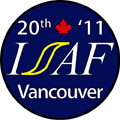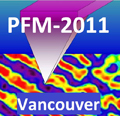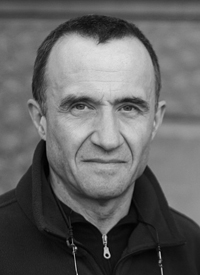Alexander Tagantsev |
Dr. Alexander Tagantsev received the B.S degree from St. Petersburg State University, in 1974, and Ph.D. degree from Ioffe Physico-Technical Institute, St. Petersburg, Russia, in 1982 in solid state physics. Before 1993, he worked in Ioffe Physico-Technical Institute, (1991-1993, head of laboratory), and St. Petersburg State Technical University (1991-1993, professor). He joined the ceramics laboratory of Swiss Federal Institute of Technology (EPFL), Lausanne, Switzerland in 1993. Presently he is a professor at EPFL, heading the section ‘Modeling and theory of Electroceramics’ at the ceramics laboratory. Tagantsev is a theoretician of a broad domain of expertise from ferroelectricity and phonon physics to electrodynamics of superconductors. He is the author of key results on the theory of microwave materials, dielectric polarization in crystalline materials, and relaxor ferroelectricity. He is also known in the field ferroelectric thin films for elucidating works on the polarization switching and degradation in these systems. He authored or co-authored more than 200 articles (cited some 6000 times) and a comprehensive book on ferroic domains.
|
|
The Ceramics Laboratory of Swiss Federal Institute of Technology (EPFL), Lausanne, Switzerland |
||
|
|
|
FLEXOELECTRICITY
The flexoelectric coupling, defined as a linear coupling between the strain gradient and dielectric polarization, has been taken into account in the theory of crystalline solids more than 50 years ago. Originally, this coupling was recognized to be important for the interaction between acoustic waves and electrons in semiconductors as well as for the lattice dynamics of solids. Further theoretical studies have revealed a number in interesting effects related to this coupling. Recent experimental studies of the direct flexoelectric effect (a linear polarization response to the strain gradient) by professor Cross with coworkers has revealed its high potential for technical applications. Presently, essentially inspired by this work, the flexoelectric effect becomes an object of extended experimental and experimental studies. This paper provides an overview of the current knowledge developed on the flexoelectric effect in crystalline solids, which covers the theory, experiment, and applications.







